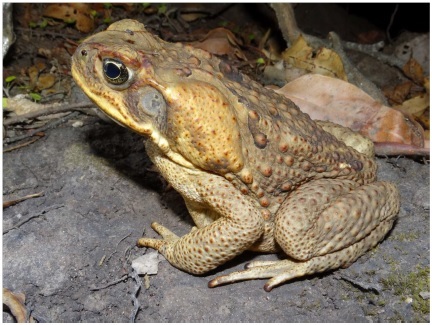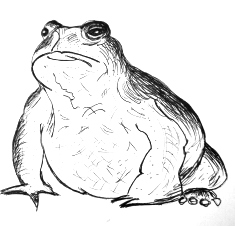CANE TOAD COLLECTION EVENT FRIDAY 9 MARCH
Brisbane City Council, in collaboration with the MCCG and the Cubberla-Witton Catchment Network (CWCN), is running an ADULT CANE TOAD CAPTURE NIGHT.
The purpose of the event is to supply adult toads for the Cane Toad Challenge (CTC) Team from the University of Queensland (UQ).
As CTC affiliates, we’d like to invite MCCG members to help gather adult toads in support of the CTC program.
WHEN? Friday 9 March, starting at 5.30pm
WHERE? CWCN House, 47-57 Hepworth Street Chapel Hill (click to open Google Maps)
WHAT? Barbecue from 5:30pm then out into the dark to collect adult toads.
OR …. BYO TOADS
You are welcome to drop off pre-captured, euthanased toads on the night. Toads must be intact and frozen as per the guidelines below for correct toad euthanasia. Please be mindful that toads are to be caught and euthanased in a manner that causes them as little stress as possible. Wear protective gloves and handle them gently.
ABOUT THE CANE TOAD CHALLENGE
CTC is a UQ initiative that aims to support research and development and facilitate the uptake of innovative cane toad control technologies.
The technology uses cane toad pheromones (baits) in conjunction with traps, to achieve the large-scale capture and removal of cane toad tadpoles from managed waterways such as dams, ponds, streams, creeks. The toxins from the adult toads are used to synthesise baits used in tadpole traps.
Coordinated implementation of tadpole trapping has the potential to dramatically reduce cane toad populations, and alleviate the environmental impact of this toxic invasive pest.
For more information about CTC, please click here.
HOW TO HUMANELY EUTHANASE CANE TOADS AND CANE TOAD TADPOLES

Prior to attempting the process outlined below, please be sure that the animal you have is a cane toad as shown in the picture and not a native frog that looks similar.
IF YOU AREN’T SURE DO NOT EUTHANASE IT!
The fridge-to-freezer method is the preferred way to humanely euthanase any toads captured as a part of the CaneToad Challenge. If you follow the steps below exactly, this will ensure that toads and tadpoles experience minimal stress.
- Toads/tadpoles should be placed in appropriate containers (e.g. plastic takeaway containers) and clearly labelled. The container should have a layer of paper towel or similar in the bottom to prevent the toads/tadpoles directly contacting cold surfaces.
- Place toads/tadpoles in the refrigerator and leave them there for a minimum of 12 hours (overnight) to ensure their body temperature reaches that of the fridge.
- Remove toads/tadpoles from refrigerator and quickly check for any response. Examples include attempting to right themselves when upside down and limb movement. If there are no signs of consciousness, place in the freezer for 48-72 hours to ensure they have completely frozen.
- Once frozen, toads/tadpoles can be stored as long as required until collection or disposal can be organised. Frozen toads/tadpoles can be disposed of in the household rubbish on bin collection day.
PLEASE DO NOT attempt any of the following:
- Placing toads/tadpoles straight in freezer without first chilling them
- Placing toads/tadpoles in direct contact with cold surfaces in fridge or freezer.
- Hitting or use any forceful manner of euthanasia
- Removing the toads/tadpoles prior to complete refrigeration or freezing
- Any other euthanasia method (e.g. sprays, Dettol, decapitation etc.).
Failure to follow the recommended euthanasia method may result in cruelty to the toads and the possible removal of support for the program in your area.
We hope to see you on the night!


